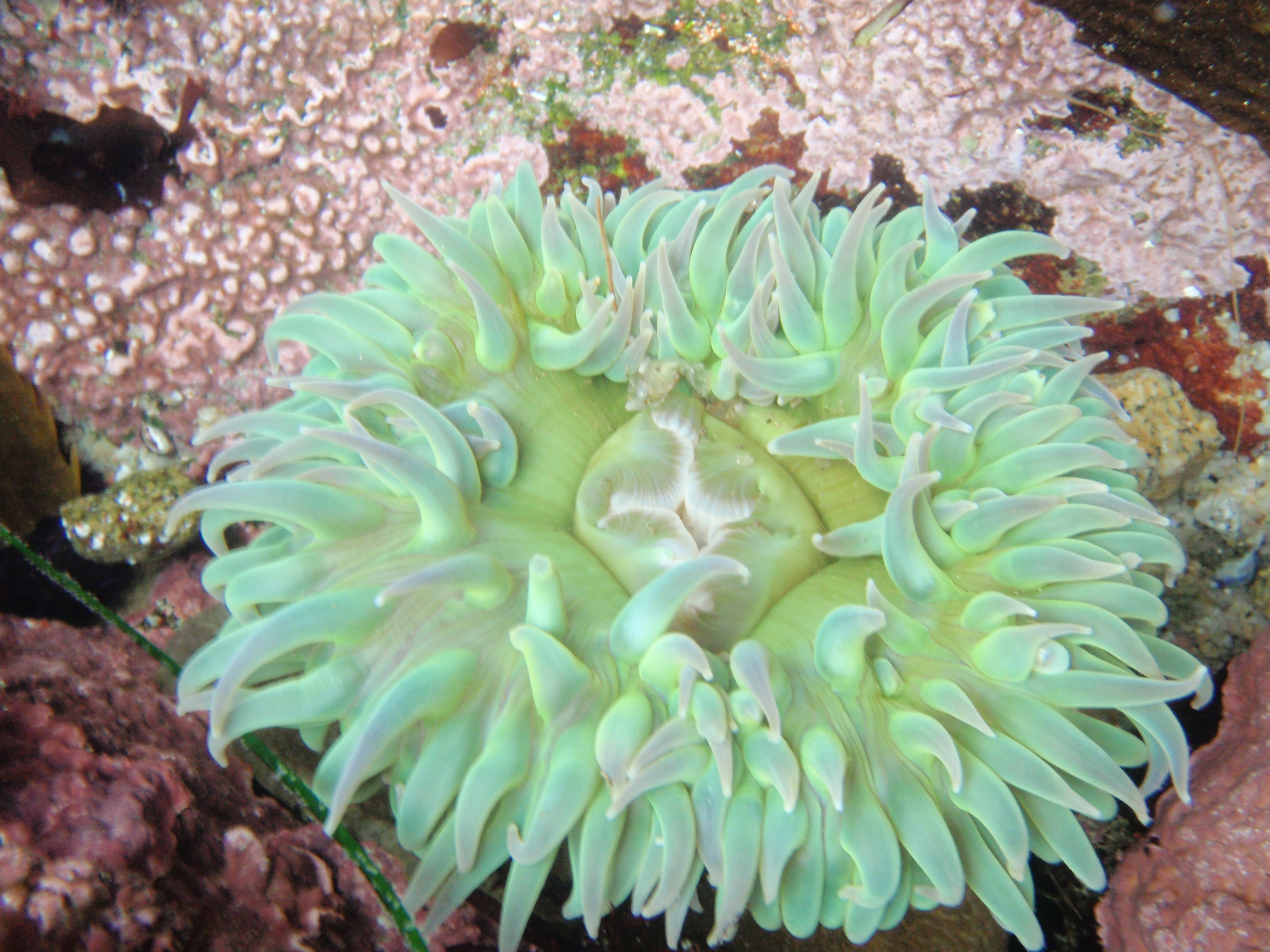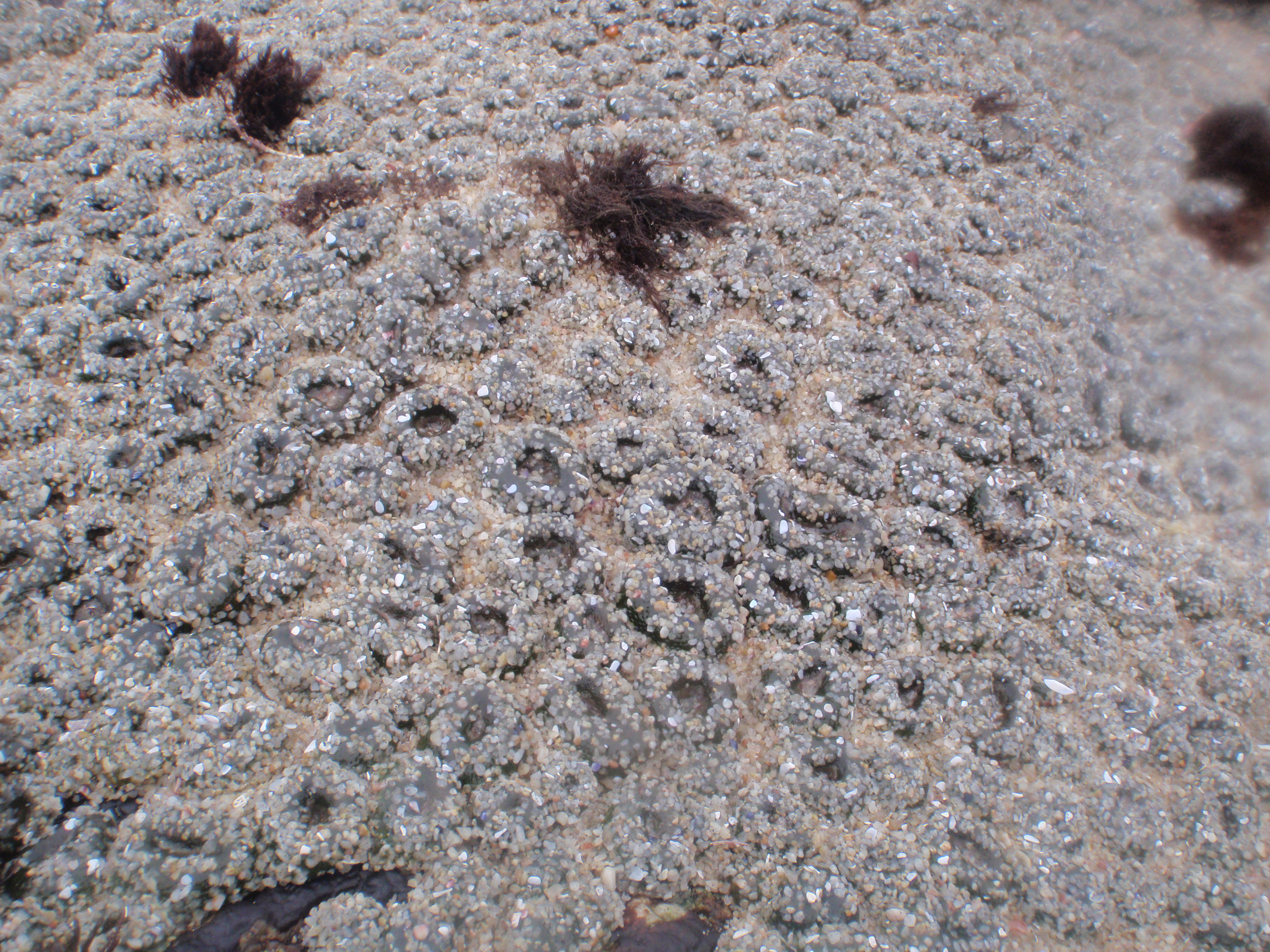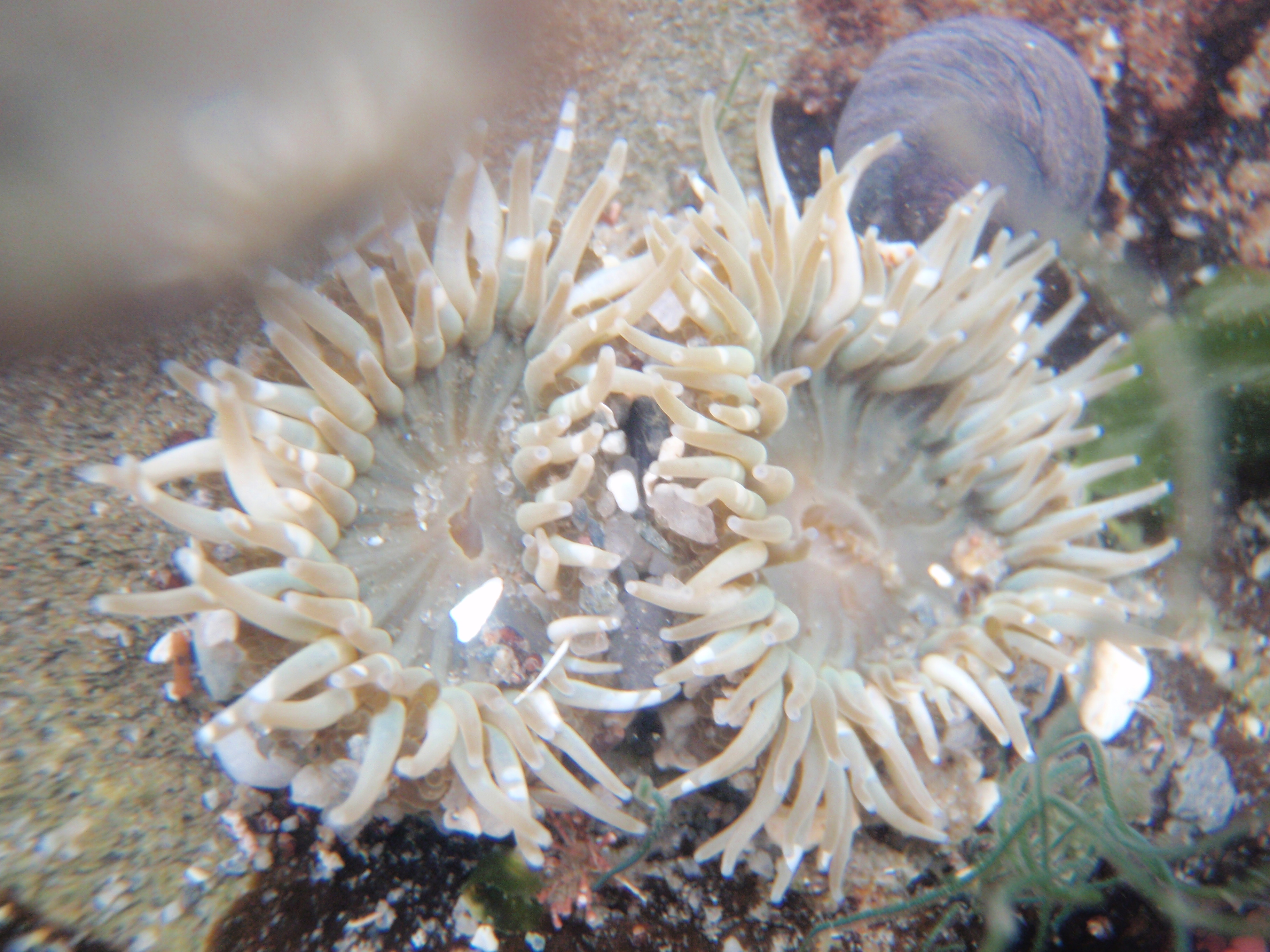By Jessica Jang
 Ever wonder why you see some anemones in groups and some alone in tide pools? Sea anemones can reproduce in two different ways, asexually and sexually. Anemones are broadcast-spawners meaning that they release eggs and sperm into the water column for fertilization. However if you're an anemone that has settled onto a nice barren rock and don't have time to reproduce, but you want to prevent other anemones from taking over that rock you claimed, what do you? You split yourself through........ FISSION! This is asexual reproduction, where the anemone splits itself and creates another one of itself of the exact same genetic material.
Ever wonder why you see some anemones in groups and some alone in tide pools? Sea anemones can reproduce in two different ways, asexually and sexually. Anemones are broadcast-spawners meaning that they release eggs and sperm into the water column for fertilization. However if you're an anemone that has settled onto a nice barren rock and don't have time to reproduce, but you want to prevent other anemones from taking over that rock you claimed, what do you? You split yourself through........ FISSION! This is asexual reproduction, where the anemone splits itself and creates another one of itself of the exact same genetic material.
Depending on species this process may take days to weeks, but once there are more clones present, more can divide themselves through fission. Sooner or later you'll see whole colonies of anemones on rocks!

Photo courtesy of Catarina Pien
In the intertidal zone one of the limited resources is space for sessile organisms so anemones have adapted a way to populate an area quickly . But what if that pesky neighbor anemone is also asexually reproducing right next to your clones? What would you do? That's when you take drastic measures, by fending them off with your acrorhagi, specialized stinging cells used to deter other anemones from taking over your area.
https://www.youtube.com/watch?v=_jNwWQtLeY4
These battles are intense, both parties may suffer serious damage. As you can see in the video, the anemones when attacked retreat. This is because each one of those tentacles have stinging cells called nematocysts. Animals in the phylum Cnidaria (anemones, corals, jellyfish, and hydrae are part of this group) have these specialized cells.
There is a mechanism that triggers the release of this harpoon-like contraption, when released the harpoon penetrates into the target organism and releases the toxin which is useful to immobilize prey such as fish. If you've ever been stung by a jellyfish that's what exactly is happening; some species of jellyfish such as the box jelly and sea wasp have stings that cause excruciating pain, anemones also have these nematocysts too. However, because our skin is too thick for the nematocyst to penetrate into, you only feel a sticky sensation from touching anemones in the tide pools. The fact that we're immune to most anemone stings in the tide pools doesn't make it acceptable to touch them constantly though, the nematocysts do take quite a lot of energy for these anemones to regulate these mechanism. So the next time you're visiting the tide pools do the anemones a favor and just observe and be amazed at their adaptations for surviving in the intertidal zone!

Photo courtesy of Catarina Pien

